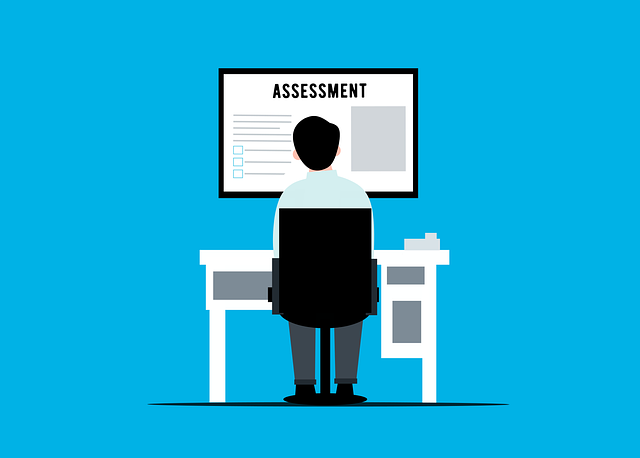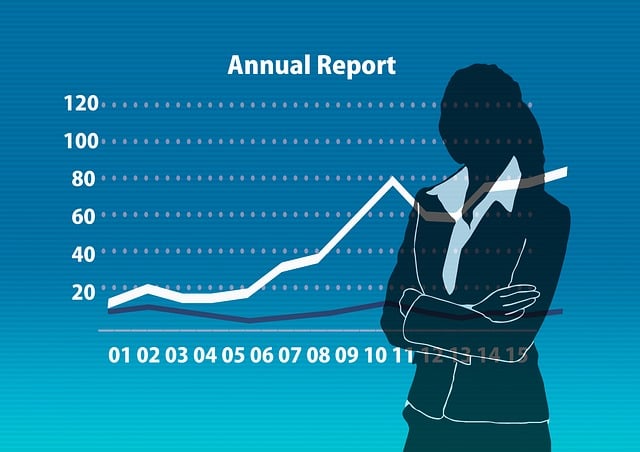TL;DR:
Risk Assessment Reports, critical for public safety & regulatory compliance in the UK, require specialized Risk Assessment Reports UK translation services. These services ensure accurate international business and legal translations, preserving technical nuances and effective communication. They are vital to avoid legal issues, misinformed decisions, and potential safety risks in highly regulated industries. Choosing the right service involves considering experience, industry jargon understanding, native English speakers, standardized terminology, rigorous quality assurance, and cultural sensitivity. Accurate translations maintain original intent, pass regulatory scrutiny, and facilitate global risk management practices for diverse international business settings.
In the global business landscape, ensuring clarity in translated UK risk evaluation documents is paramount. Risk Assessment Reports, critical components of any organization’s compliance and safety protocols, demand precise communication during translation. This article explores essential aspects from understanding report structures to navigating legal implications. We delve into best practices, including selecting reputable UK translation services, adapting cultural nuances, and quality assurance processes. By adhering to these guidelines, organizations can ensure accurate and effective risk assessment document translations.
- Understanding Risk Assessment Reports: A Brief Overview
- The Importance of Clear Communication in UK Translations
- Challenges in Translating Technical Documentation
- Selecting the Right UK Translation Services
- Ensuring Accuracy and Consistency in Risk Evaluation Documents
- Adapting to Cultural Nuances for Effective Communication
- Quality Assurance Processes in Professional Translation
- Legal Implications of Inaccurate Risk Assessment Translations
- Best Practices for Revising and Editing Translated Reports
- Case Studies: Successful UK Risk Assessment Report Translations
Understanding Risk Assessment Reports: A Brief Overview

Risk Assessment Reports are vital documents in the UK, outlining potential hazards and their mitigation strategies across various sectors. These reports play a crucial role in ensuring public safety and compliance with regulatory standards. When it comes to international business or legal matters, accurate translation of such documents is essential. UK translation services specializing in risk assessment literature must grasp the nuances of this technical content to convey precise information.
The process involves not just word-for-word translation but also understanding the context and purpose of each report. Translators need to be adept at interpreting complex terminology related to risk analysis, ensuring that the translated document maintains its original intent and integrity. Effective communication of risk factors, control measures, and potential consequences is paramount to make these reports accessible and meaningful for global audiences.
The Importance of Clear Communication in UK Translations

In the realm of international business, clear and precise communication is paramount, especially when it comes to risk assessment reports. UK translation services play a crucial role in ensuring that documents related to risk evaluations are accurately conveyed from one language to another, maintaining their integrity and utility. This is not merely about converting words; it’s about translating complex concepts and technical jargon while preserving the original meaning and intent.
The significance of clear communication cannot be overstated, particularly in regulatory-focused industries. Misunderstandings or ambiguities in risk assessment reports can lead to serious consequences, including non-compliance with legal requirements, misinformed decision-making, and potential safety hazards. Professional translation services, therefore, act as a bridge, facilitating effective communication between UK organizations and their global counterparts, ensuring that risk evaluation documents are understood and acted upon accurately worldwide.
Challenges in Translating Technical Documentation

Translating technical documentation, such as Risk Assessment Reports, presents a unique set of challenges. These documents often contain complex terminology and intricate details that demand precise rendering in the target language. Professional UK translation services understand the importance of accuracy and consistency when dealing with risk evaluation literature. They employ linguistically skilled translators who are not only adept at translating technical terms but also possess expertise in the relevant field to ensure the information remains reliable and meaningful.
One significant hurdle is maintaining the document’s integrity while adapting it for a different cultural and linguistic context. Technical texts may include references, idioms, or concepts unique to the UK, which can be difficult to convey effectively in other languages. Skilled translators overcome this by staying updated with industry-specific terminology and cultural nuances, ensuring that the translated Risk Assessment Reports remain clear and accessible to the intended audience, regardless of their native language.
Selecting the Right UK Translation Services

Selecting a reputable and experienced UK translation service is paramount when it comes to accurately translating Risk Assessment Reports. These documents are critical in various sectors, from healthcare to manufacturing, where adhering to UK regulations is non-negotiable. Therefore, choosing a service that understands not just language but also industry jargon and legal nuances is essential.
Look for providers with a proven track record in handling Risk Assessment Reports, native English speakers, and access to subject matter experts who can ensure terminology consistency and accuracy. Reputable agencies will also have robust quality assurance processes, including proofreading and editing, to deliver flawless translations that meet industry standards.
Ensuring Accuracy and Consistency in Risk Evaluation Documents

When it comes to translated risk assessment reports, accuracy and consistency are paramount. UK translation services should employ qualified linguists with a deep understanding of both the source and target languages, as well as industry-specific terminology. This ensures that nuanced risk assessments are conveyed precisely, preserving the original meaning and intent.
Consistency is equally vital across all translations. Using standardised terminology and formatting throughout ensures clarity for stakeholders globally. Reputable translation services often implement quality assurance processes, including proofreading and editing by native speakers, to guarantee error-free and coherent documentation.
Adapting to Cultural Nuances for Effective Communication

Effective communication is key when translating UK risk assessment reports for international audiences, and adapting to cultural nuances plays a vital role in this process. Different cultures have distinct ways of expressing ideas, values, and risks, which can significantly impact how information is interpreted. Professional translation services understand these subtleties and tailor their approach accordingly. For instance, they might use equivalent terms or phrases that resonate with the target culture, ensuring the translated document aligns with local risk management practices and expectations.
By embracing cultural adaptability, UK risk assessment reports become accessible and meaningful to global readers. This is particularly important in international business settings where decision-makers from diverse backgrounds rely on accurate and culturally sensitive information. Well-executed translation services not only bridge the language gap but also facilitate a deeper understanding of potential risks, fostering more effective collaboration and risk management strategies across borders.
Quality Assurance Processes in Professional Translation

Professional translation services, especially those dealing with complex documents like Risk Assessment Reports from the UK, must implement robust Quality Assurance (QA) processes to maintain accuracy and consistency. QA is vital in ensuring that translated materials not only convey the same meaning as the original but also meet industry standards and regulatory requirements. This involves a multi-step approach, starting with meticulous source text analysis to understand its nuances and context.
Translators then engage in back-translation, where they translate the document back into the source language, identifying potential inconsistencies or errors. This process is followed by desk review, where experts scrutinize the translation for factual accuracy, terminological consistency, and cultural adaptation. Computer-aided translation tools and memory databases also play a crucial role in streamlining QA, enabling translators to maintain terminology standards and ensure coherent rendering of specialized content found in Risk Assessment Reports.
Legal Implications of Inaccurate Risk Assessment Translations

Inaccurate risk assessment translations can have significant legal implications, especially within the United Kingdom where regulatory compliance is paramount. When translating UK risk evaluation documents, whether for business continuity planning or regulatory submission, professional translation services are essential to maintain integrity and accuracy. Mistranslations can lead to misunderstandings, misinterpretations, and even legal consequences if they result in non-compliance with critical safety and health standards.
Regulatory bodies and courts often scrutinize such documentation to ensure the risk assessments reflect an accurate understanding of potential hazards. Using reputable UK translation services specializing in technical documents ensures that qualified translators capture nuanced terminology accurately, preserving the original intent and meaning. This is crucial in industries like healthcare, pharmaceuticals, and finance, where even minor errors can have severe repercussions, including fines, legal action, and damage to reputation.
Best Practices for Revising and Editing Translated Reports

When revising and editing risk assessment reports after UK translation services, it’s crucial to approach the process methodically. Start by thoroughly reviewing the structure and organization of the document. Ensure that the original hierarchy of information is preserved while adapting it to the target language’s natural flow. Check for any discrepancies or potential ambiguities arising from cultural differences in phrasing and terminology.
Next, focus on terminology consistency. Establish a comprehensive list of industry-specific terms and ensure their accurate translation and usage throughout the report. It’s essential to maintain clarity and avoid misinterpretations. Engage professional linguists or subject matter experts if needed to verify the accuracy and naturalness of the translated content. Additionally, pay close attention to formatting, including dates, currencies, and measurements, ensuring they are appropriately adapted for the target audience.
Case Studies: Successful UK Risk Assessment Report Translations

Successful UK risk assessment report translations often hinge on thorough understanding and meticulous attention to detail. Case studies highlight projects where translation services seamlessly integrated complex risk data, maintaining clarity and accuracy across languages. These examples demonstrate how professional translators navigate terminological nuances specific to each industry, ensuring the translated documents align perfectly with their original British contexts.
Such successful translations don’t merely replace words; they convey nuanced concepts accurately. By leveraging expertise in both language and risk management, these services produce reports that are not just linguistically correct but also conceptually coherent. This approach is vital for global audiences who rely on these assessments to make informed decisions, emphasizing the importance of high-quality UK risk assessment report translations.
Ensuring clarity in UK risk assessment reports is paramount for effective communication, compliance, and legal integrity. By understanding the intricacies of technical documentation, leveraging professional translation services, and adhering to best practices, organizations can navigate cultural nuances and deliver precise, consistent reports. This comprehensive approach guarantees that risk assessments are not only accurately translated but also tailored to meet the specific requirements of diverse audiences in the UK and beyond. Effective risk communication is a vital step towards informed decision-making and regulatory adherence.
